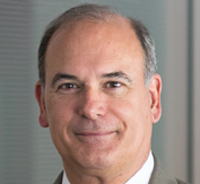The Center for a New American Security (CNAS) has released another excellent study, and its launch was accompanied by an event on July 28 at the Willard Hotel that included nearly the entire team of authors. The report, available on the CNAS website, is called “Aum Shinrikyo: Insights Into How Terrorists Develop Biological and Chemical Weapons.” The authors included the Honorable Richard Danzig, former Secretary of the Navy and a national security advisor to Senator and candidate Obama, several specialists in the psychology of terrorism, chemical and biological weapons, and Japanese linguists.
CNAS is known for going after issues in ways that are original but highly relevant. This report could easily be used as the exemplar of the interesting and effective way this young (by DC think tank standards) and sharp organization approaches its work.
Many readers may not even remember Aum Shinrikyo (AS), the radical and eccentric Japanese cult that made a big splash by deploying homemade Sarin nerve gas in the Tokyo subway in 1995. Thirteen people died, and numerous more became seriously ill from the gas. Danzig and crew not only did extensive research into the cult and their numerous attempts at WMD prior to the Sarin attack but also was able to interview the incarcerated cult members.
The result is a superb history of a singular event in modern terrorism history. The complete history of this odd group of people and their dangerously charismatic leader is fascinating and gives great insight into how cults like this work and why they remain dangerous. That alone is worth the read. That, however, was not the point of the study.
The team used Danzig’s policy expertise to highlight that sixteen years later, still facing a threat from terrorists, we need to learn from this incident.
They show how a small group of dedicated loyalists can pull off some acts that many “experts” still persist in saying only nation states can do. No, I am not saying that AS’s actions were the equivalent of the vaulted Soviet WMD programs, or even Saddam Hussein’s pre-First Gulf War programs; they were not.
That said, if AS had not been a little crazy (OK, more than a little), they could have done a lot more damage. I will not re-iterate the report (read it please), but they had several shots at the terrorist “home run,” and only through luck (for the good guys) and strange internal dynamics did they drop the ball.
The bottom line is simple folks – we CANNOT underestimate the creativity of terrorists. We CANNOT underestimate the resourcefulness of a small handful of scientists who are also true believers (regardless of the craziness of the beliefs). We CANNOT assume that only nation states can create dangerously deadly chemicals and bio weapons. These guys did it, and so can others. It is not easy, but being hard and being impossible are a long way apart.
Read the history, but please LEARN from it. There are bad guys out there ready to exploit the superior ability we now have for research, the many radicalized intellectuals and the readily available funds to develop WMD. They might not take out a city, but many would potentially die. Underestimating our enemies could be deadly.


